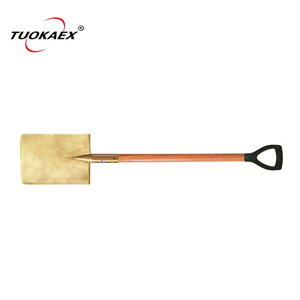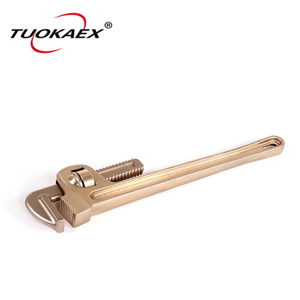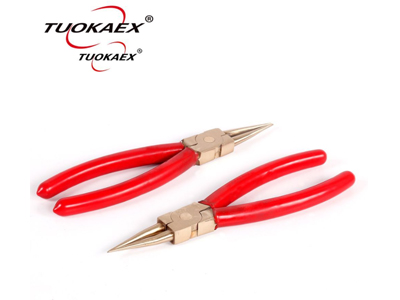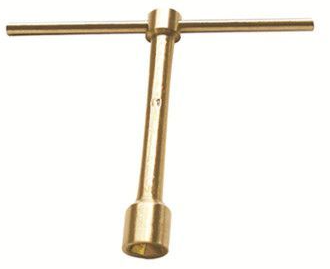Non-sparking Tools: Safety Considerations
According to Directive 1999/92/EC, steel tools are considered to be a source of ignition and therefore unsafe for use in the presence of explosive atmospheres. In such environments, non-sparking tools must be used.
However, based on our experience in the industry worldwide, there are still many purchasing, maintenance, and even safety professionals who are not fully familiar with what non-sparking tools are and what the key criteria are for use when purchasing or using such tools.
The most common non-sparking alloys are aluminum - bronze (Al-Bron) and copper - beryllium (Cu-Be), but what criteria should be followed when choosing one of these options?

Explosion-proof Durable Hand Tools Aluminum Bronze Edging Spade
Type of gas in the environment
Despite its name, non-sparking tools do produce sparks (all metals produce sparks when they rub against each other). The difference between non-sparking tools and ordinary steel tools is the energy of the sparks they generate.
Therefore, their key goal in avoiding explosions is to keep the spark energy below the ignition point of atmospheric gases. To ensure that the correct non-sparking tool is used, the first step is to know which gases will be present in the atmosphere.
Sparks generated by Cu-Be non-sparking tools have the lowest energy level and are therefore the safest sparks to use in all gas groups (I, IIA, IIB and IIC). The only exception is in the presence of acetylene, in which case both Al-Bron and Cu-Be tools are unsafe because of the large amount of copper in their composition (copper reacts with acetylene gas to form highly explosive particles called acetylenides).

Nonsparking Pipe Wrench
Frequency of use
Even though Cu-Be spark-free tools are the safest option, they are more expensive to purchase than Al-Bron tools. There is no safe alternative to Cu-Be tools in the presence of Group IIC gases, however, Al-Bron tools may be a viable alternative when Group I, IIA, or IIB gases are present.
The key factor to consider in this case is the frequency of use of non-sparking tools, mainly because Al-Bron tools are softer and therefore more prone to breakage. If you use non-sparking tools frequently, Al-Bron tools may actually be a more expensive option given the cost of replacement over time.
Certification
As with all safety-critical products, trust is key. If the spark energy generated by a non-sparking tool is dependent on the material composition of the tool, any change in material composition will have a direct impact on the energy level of the sparks generated.

Non-Sparking Snap Ring-Internal Pliers
To be 100% confident that the tools purchased and used will not produce sparks up to gas ignition temperatures, it is recommended that purchasing managers require third party certification of the tool material properties from the manufacturer as required by Directive 1999/92/EC.
Such certificates are not related to the company's management system (e.g. ISO 9001 or ISO 18000) or the mechanical properties of the tool (e.g. according to DIN standards). Certification of material properties focuses on the material composition of the tool to ensure that the energy level of the sparks generated is that which is considered safe for use in the presence of different gas groups.
As with any certification, it is recommended that such testing be performed by an independent third party (to avoid any conflict of interest). The German Federal Institute for Materials Research and Testing (BAM) is one of the most reputable laboratories approved by the EU for certification under Directive 1999/92/EC.

T Type Wrench
Alloy markings on each tool
Al-Bron and Cu-Be tools have similar colors and are therefore difficult to distinguish from each other. Considering that the selection of the correct alloy is a critical step in ensuring safety, it is important that those who purchase and use the product are 100% sure they have selected the correct alloy.
The only way to achieve this goal is to mark each non-sparking tool with an allowable laser. This is the only way to ensure that the manufacturer delivers the correct alloy and that the field team is using the correct tool at the start of the shift.
For more information and consultation, contact us here!

评论
发表评论